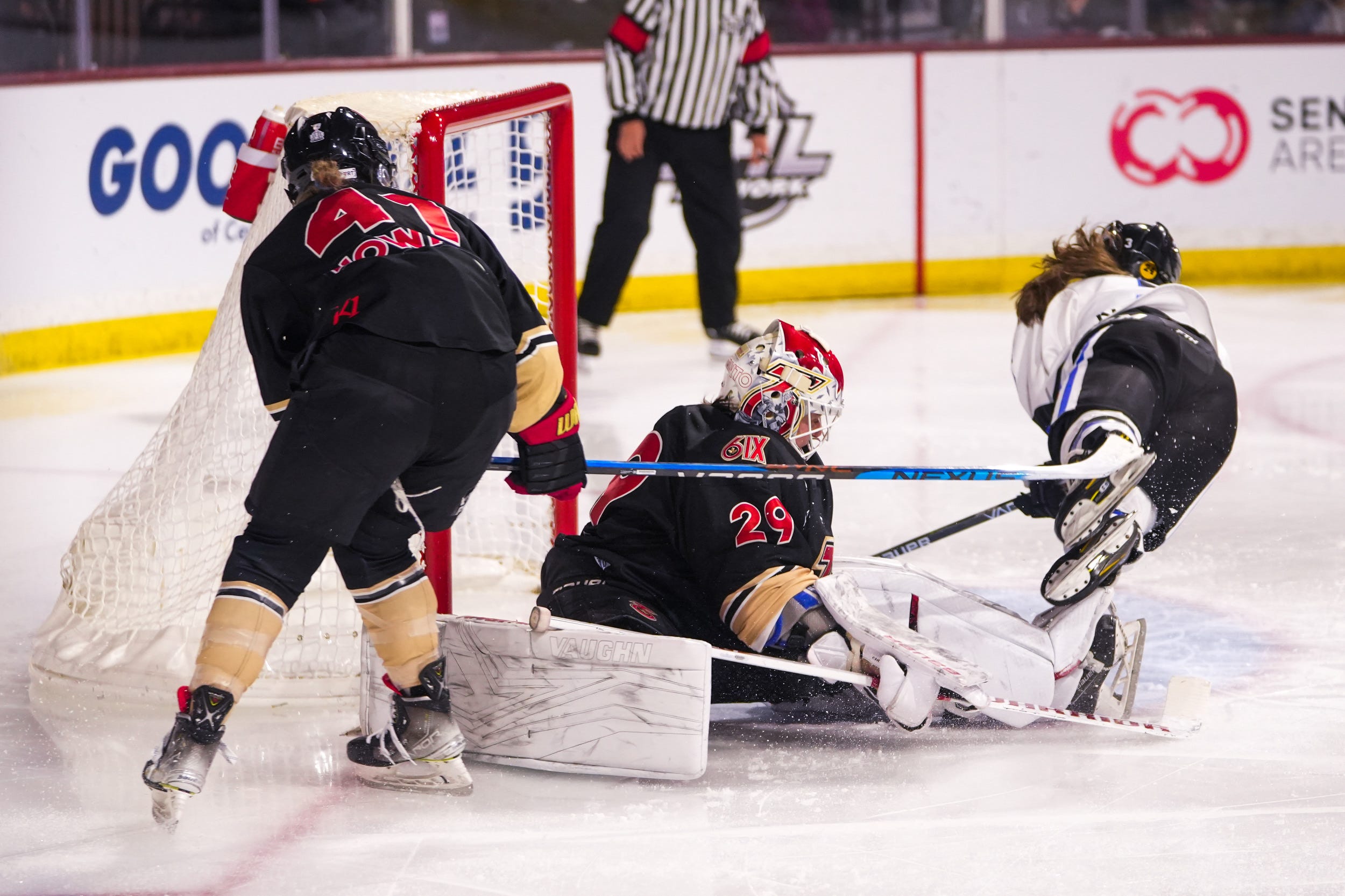In a shocking move, the Mark Walter Group and Billie Jean King Enterprises announced the purchase of the Premier Hockey Federation.
PHF Ends After Eight Seasons
Last December, the women’s professional league announced an increased salary cap of up to $1.5 million per team. They ended the 2022-23 season with the Toronto Six winning the Isobel Cup for the first time. There were no indications of any financial difficulties – at least, not publicly.
With this takeover, the PHF is effectively over. What remains is discovering what assets have been purchased by the controlling groups and what current teams will continue to exist.
The ongoing battle between the PHF and the Professional Women’s Hockey Player’s Association has made advancing women’s pro hockey in North America difficult. Repeated efforts have been made to merge the two groups, but none have been successful.
It wasn’t just a clash of personalities, though there have been publicly reported issues. The two groups had very different ideas of how a league should be ideally run, with one holding a strict owner/player divide and the other with players having a controlling interest.
Don’t Call It A Buyout
A more accurate description would be the purchase of “assets” rather than the league. Unfortunately, that means many players lost their jobs or, at the very least, have been left in limbo.
Contracts that were signed – often to substantial amounts – are simply void. The PHF insisted on an “at will” termination clause in all contracts leading into this year. That means there is no legal recourse for those PHF players.
This is horrible news for those women who thought they had contracts for the next season. Yes, in theory, they can catch on with whatever teams emerge. In reality, they have gone from guaranteed income to needing to audition again.
Everyone knows it’s hard to convince a bank to take “maybe” as a loan payment. “I had the money right here” isn’t any better.
Okay, So About the PWHPA
Officially the PWHPA is a union, not a league. At least it was, as of this Spring. It must still certify a collective bargaining agreement before becoming a league. But it may not be quite so simple, according to Erin Brown at Rinkside:
It was reported in February PWHPA players had formed a union.
Since then, at least weekly checks have been made with the U.S. Dept. of Labor to verify a union has been formally established.
No public records have been found that confirm this.
— Erin Brown (@rinkside) June 30, 2023
It’s a surprisingly compressed schedule for a group with several incarnations. There is a lot of ground to cover, at least in the US, to satisfy the Department of Labor regulations. And there was another surprise Thursday night:
PWHPA players have been sent ballots tonight to ratify a new collective bargaining agreement and league constitution. Voting continues through Sunday night. Would run through 2031.
— Greg Wyshynski (@wyshynski) June 30, 2023
This one piece of paperwork has a lot of ground to cover. It’s astounding to think that the union players now have to decide on ratification three days after their industry has turned upside down.
By all reports, neither the PWHPA nor the PHF players were told that this takeover was happening. They found out with the rest of us – right after the people in one room agreed.
So Now What?
Melissa Burgess likely said it best.
Here's what we don't know:
– Everything else.
— Melissa Burgess (@_MelissaBurgess) June 30, 2023
The PHF had buildings and infrastructure, not just players. Clearly, some of those will be used by the new league. Which ones are in the air, and who runs them?
Of the seven teams, the two Canadian ones are the newest additions and are almost certainly continuing. The most successful team – Boston – is likely to remain intact as well. Ideally, all former PHF teams will continue in one form or another. But it won’t be this year.
There is now enough talent in the market to increase the number of teams. But starting a professional team from scratch is highly complicated. Unless the infrastructure is ready to go, new additions aren’t happening in time for the 2024 season.
According to Hailey Salvian at The Athletic, six teams will open the 2024 season.
Cautious Optimism
This is awful news for scores of women who were promised jobs and thought they had one right until yesterday. This complicated and messy business is no better than any other significant corporate takeover.
But if there is any reason for optimism, it is for the future of women’s hockey. Having one league removes the excuse of the NHL not getting involved. Like the WNBA, that can be a game-changer, accelerating the game’s reach exponentially.
Likewise, having a single, unified voice speaking for women’s professional hockey will help to get an image into the public eye. Given the years of conflict between the groups, that may be overly optimistic, but we’re looking for hope here.
More information is going to come out over the next few days. Many players and employees are undoubtedly in shock right now, and understandably so. This isn’t the end of the messiness, not by a long shot.
But hopefully – hopefully – it will be a more robust, focussed league ready to begin an exciting new season in 2024.
MAIN PHOTO: Antranik Tavitian/The Republic / USA TODAY NETWORK






